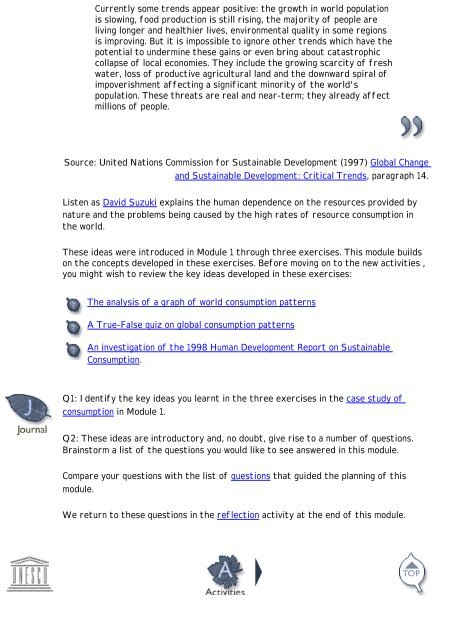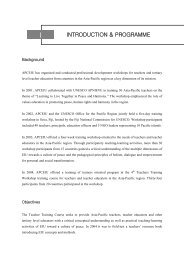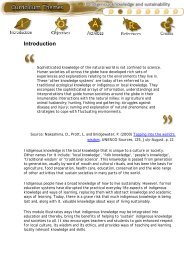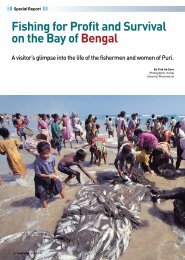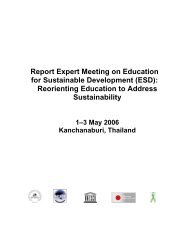Module 9 Consumer education - APCEIU
Module 9 Consumer education - APCEIU
Module 9 Consumer education - APCEIU
You also want an ePaper? Increase the reach of your titles
YUMPU automatically turns print PDFs into web optimized ePapers that Google loves.
Currently some trends appear positive: the growth in world population<br />
is slowing, food production is still rising, the majority of people are<br />
living longer and healthier lives, environmental quality in some regions<br />
is improving. But it is impossible to ignore other trends which have the<br />
potential to undermine these gains or even bring about catastrophic<br />
collapse of local economies. They include the growing scarcity of fresh<br />
water, loss of productive agricultural land and the downward spiral of<br />
impoverishment affecting a significant minority of the world's<br />
population. These threats are real and near-term; they already affect<br />
millions of people.<br />
Source: United Nations Commission for Sustainable Development (1997) Global Change<br />
and Sustainable Development: Critical Trends, paragraph 14.<br />
Listen as David Suzuki explains the human dependence on the resources provided by<br />
nature and the problems being caused by the high rates of resource consumption in<br />
the world.<br />
These ideas were introduced in <strong>Module</strong> 1 through three exercises. This module builds<br />
on the concepts developed in these exercises. Before moving on to the new activities ,<br />
you might wish to review the key ideas developed in these exercises:<br />
The analysis of a graph of world consumption patterns<br />
A True-False quiz on global consumption patterns<br />
An investigation of the 1998 Human Development Report on Sustainable<br />
Consumption.<br />
Q1: Identify the key ideas you learnt in the three exercises in the case study of<br />
consumption in <strong>Module</strong> 1.<br />
Q2: These ideas are introductory and, no doubt, give rise to a number of questions.<br />
Brainstorm a list of the questions you would like to see answered in this module.<br />
Compare your questions with the list of questions that guided the planning of this<br />
module.<br />
We return to these questions in the reflection activity at the end of this module.


